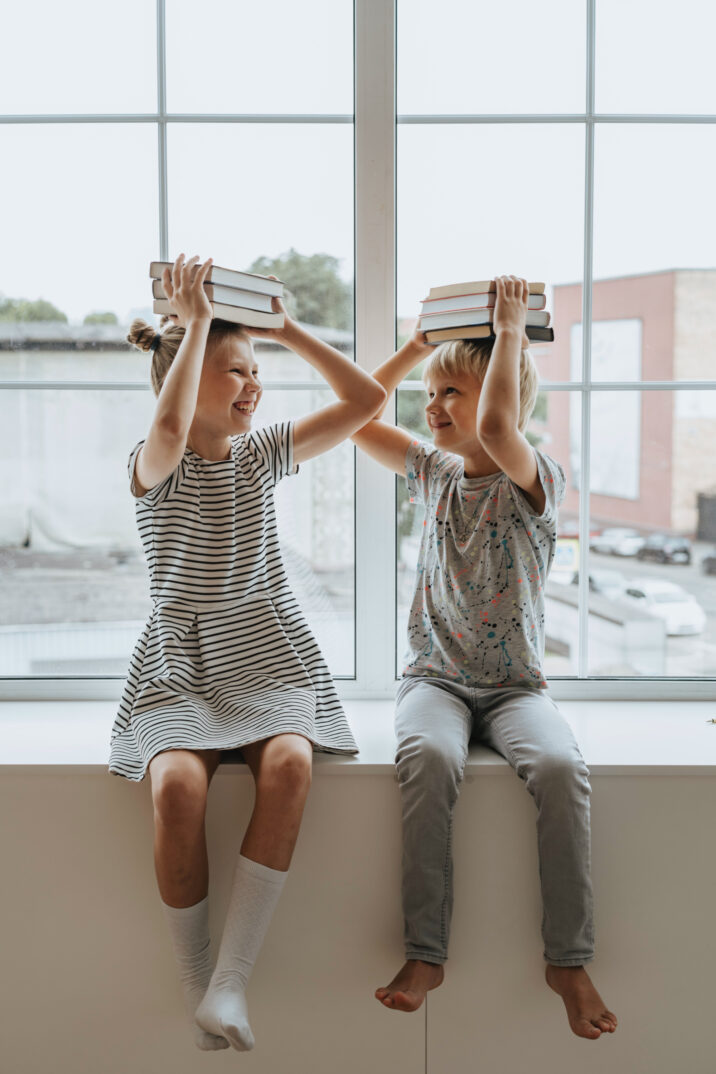Physical development Physical development has many things – height, weight, coordination, but most adults do not take into account the
Continue readingChild psychologist: “Five-year-olds have no place at the desk”
All the world is a laboratory to the inquiring mind.
6 to 12 months This period refers to a greater extent not to the plot and plot lines or stories,
Continue readingHow to teach your child to love books? (6-12 month old)
At this age, babies become more and more independent. Listen to your child and let him stop and interrupt you.
Continue readingHow to teach your child to love books? (12-18 month)
Age 3 to 5 years This is the period of active growing up of the baby. This age suggests that
Continue readingHow to teach your child to love books? (3-5 years old)
Physical development Physical development has many things – height, weight, coordination, but most adults do not take into account the
Continue readingChild psychologist: “Five-year-olds have no place at the desk”
6 to 12 months This period refers to a greater extent not to the plot and plot lines or stories,
Continue readingHow to teach your child to love books? (6-12 month old)
Bullying (from the English. To bull – to persecute) is the aggressive conscious behavior of one child (or group) towards
Is the full development of a child possible without additional education? Although the document “On Education” says that one of
Continue readingWhy do you need additional education for children
For most, the realities of life in Asian countries remain unknown. As a destination for tourism, this part of the
Continue readingFeatures of school education in the Far East
Perhaps the most pressing topic in the media world today is the issue of “fake news”. Even Elon Musk, the
Continue readingHow and why should children be able to distinguish between “fake news”?
All parents dream of a polite little child who says please and thank you. After all, your baby’s behavior reflects
Continue readingModeling behavior is the best way to teach your child good manners
Children have such a wide range of emotions, many of which are extremely powerful to control. Each kid deals with sentiments in their unique way, but knowing how to manage them is crucial for coming of age. Learning to identify and express one’s emotions takes a bit of time for kids. This development can be eased by discussing feelings with children. There are various strategies to help kids achieve a higher EQ, and using age-appropriate literature is one easy yet highly effective approach.
With the guidance of these 10 great illustrated books, younger children can make sense of their emotions.
Here are some of our top picks:
Everybody, even the central character Bella in this humorous yet comforting book about trying to come to terms with your feelings, seems to have a tough day now and then. Hardly anything seemed to be going well for Bella that day. Fortunately, the mother is there to provide hugs and encouragement that tomorrow will be easier. This is a beautiful story for reading aloud, one that many young children and their adults will empathize with.
The purpose of reading it is to discuss how rage makes you react, what it makes you really want to do, and what you’ll do rather than. The story’s ideas are delivered from various perspectives to help the younger audience understand how to deal with the most destructive yet powerful emotion.
An intelligent and heart-warming tale belongs on every kid’s bookshelf.
Anxieties might start little, as Ruby’s does in this educational graphic novel, and they can also quickly spiral out of control. This is the ultimate book for exploring childhood fears and tensions, no matter how powerful or insignificant they appear.
Children have powerful emotions that they don’t always know how to control. How Are You Feeling Today? is jam-packed with creative, enjoyable techniques to help kids identify and manage various emotions. It’s useful not just for discussing feelings with kids in particular but also for understanding their specific emotions on any given day and creating a strategy for coping with them.

The goal is to teach kids how to communicate their frustration and anger without being destructive or aggressive. The book goes over a good summary of all the stuff that hands may be used and recommendations for how to put what you’ve learned in the book into practice.
It’s crucial to know how to understand feelings. Learning how to cope with those feelings is also important. This book teaches kids how to use breathing as a calming strategy to deal with powerful and negative emotions.
This lovely picture storybook is wonderful for young kids to dive in. We learn everybody has feelings, including the dog, by centering on the conflicting emotions of brother and sister. Some are simpler to understand than others, and some aren’t necessarily what they appear to be.
Stuff may not always end up the way we expected. Whenever it occurs, knowing how to deal with thoughts of irritation, sadness, or exhaustion is a smart idea. For school-aged kids, this novel is a must-read.
It is an excellent trampoline for talking to kids about moods in general and teaching them how to identify certain feelings in themselves since there is no focus on behavior in this book. The book incorporates poetry to express various everyday emotions and portrays them as a natural aspect of someone being human.
We all want to fall in love at some point in our lives. And there’s nothing more lovely than showing somebody you care about them. This children’s book, centered around touching poetry, is excellent for demonstrating how much a beloved person matters to you.
Children’s books that spark conversations on various thoughts, feelings, and mental health, in general, have never been more crucial – especially for those who have experienced major life changes. I hope that this list will assist you in taking the first step towards having a meaningful conversation with your child.